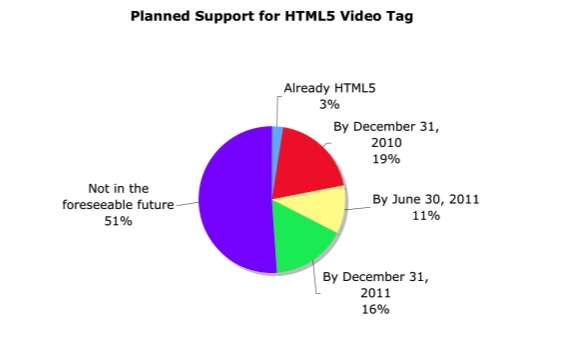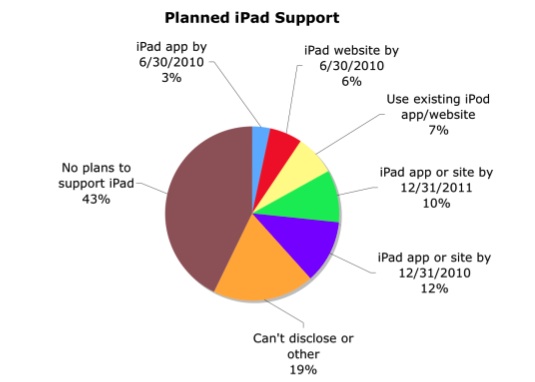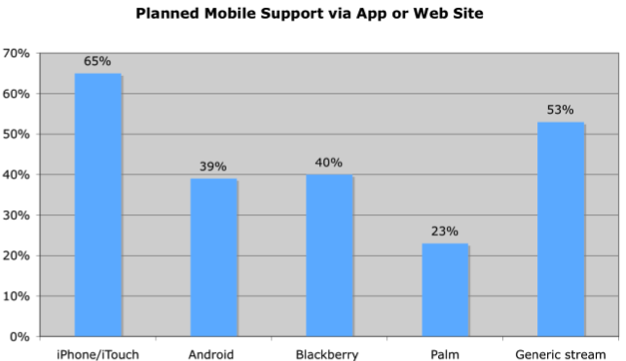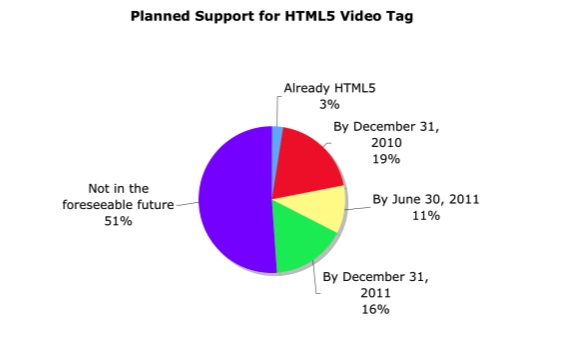
As everyone on the Web knows by now, Steve Jobs does not think too highly of Flash and therefore you cannot watch Flash videos on the the iPad (or the iPhone). Apple’s position has stirred a lot of debate about how much video on the Web is iPad-friendly. It turns out that about two thirds of new videos are currently being encoded in the H.264 format, which is playable on the iPad, but media sites still need to either package that video in an app or in an HTML5 video player viewable in the iPad’s browser.
Streaming Media decided to shed more light on the issue by surveying 1,147 online media professionals about their iPad and HTML5 video plans in a report available here. According to the survey, 49 percent plan to support HTML5 video on their media sites by the end of next year, and 36 percent plan to support video on the iPad either through dedicated apps or an iPad compatible Website.

At first blush, these two numbers don’t seem to make much sense. If 49 percent of media sites are going to support HTML5 video, then by default they will also support the iPad. But if you drill down into the survey responses on whether they plan to support the iPad specifically, a full 19 percent wouldn’t disclose one way or the other. Add that to the 36 percent who say they will support the iPad, and you get close to half, which is the same as how many say they will support HTML5 video. What this tells me is that either there is still some confusion on the part of the Web video industry or that there is more support for broader standards like HTML5 video which will work across different devices like Android phones and tablets.
Other than the iPad, support for mobile devices goes beyond Apple devices. While 65 percent plan to support video on the iPhone via apps or an HTML5 Web video, about 40 percent plan on supporting Android and Blackberry devices. Again, the way to kill many birds with one stone is with HTML5 video through the mobile browser rather than developing separte video apps for each device.

Already, YouTube, Brightcove, and many others are getting on the HTML5 bandwagon. There are still standards battles brewing between the underlying H.264 and new Google-backed WebM codecs. (Just today, Google enabled WebM support in Chrome, for instance).
Confusion is not good for adoption. A full 32 percent of the survey “respondents said that the lack of a single HTML5-compatible video codec is holding them back from moving to HTML5.” But small companies are moving faster than big ones (no surprises there). Only 13 percent of media companies with more than $1 billion in revenues plan to support the iPad in the short term, according to the survey, compared to 30 percent of organizations with less than $1 million in revenues. I predict the bigger media companies will come around soon enough.
